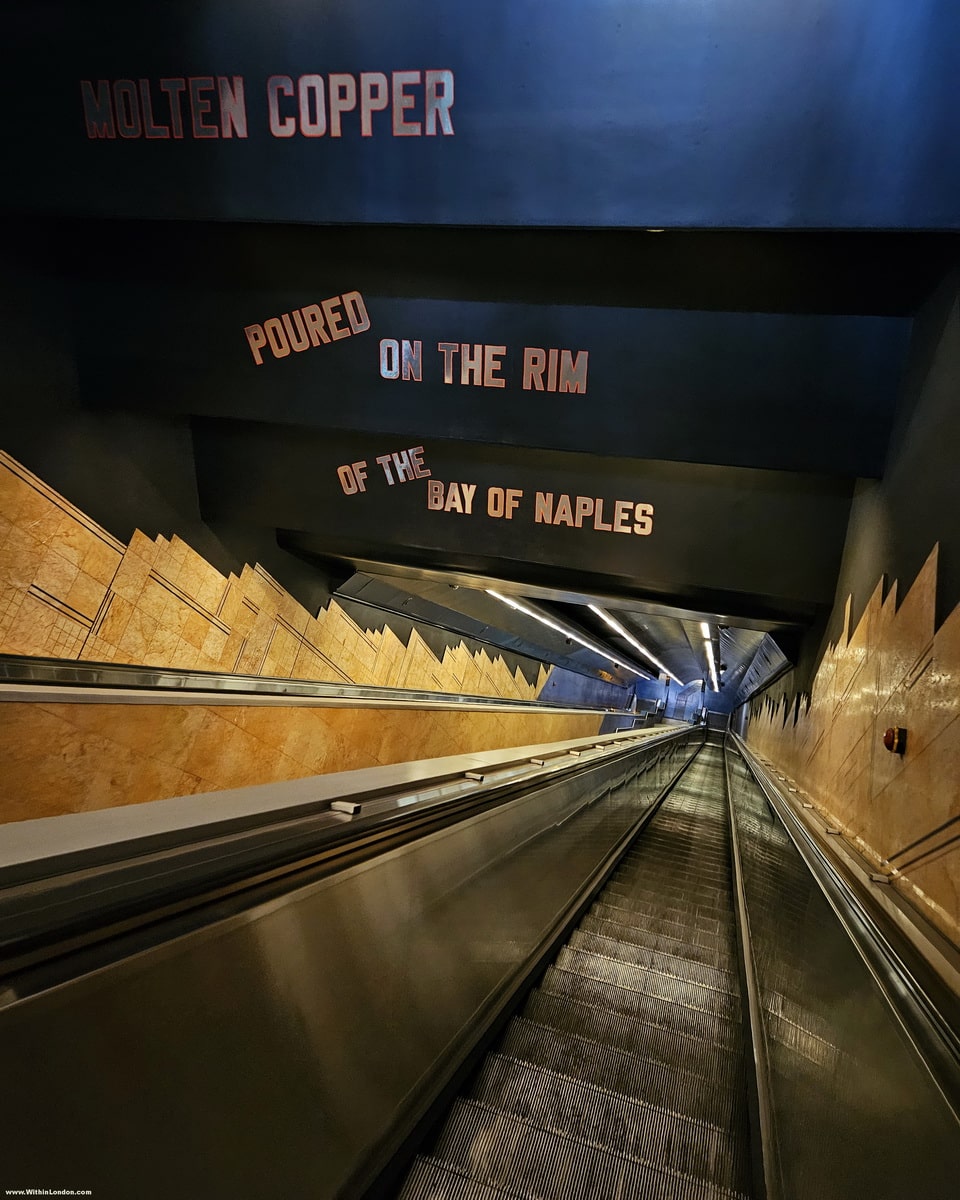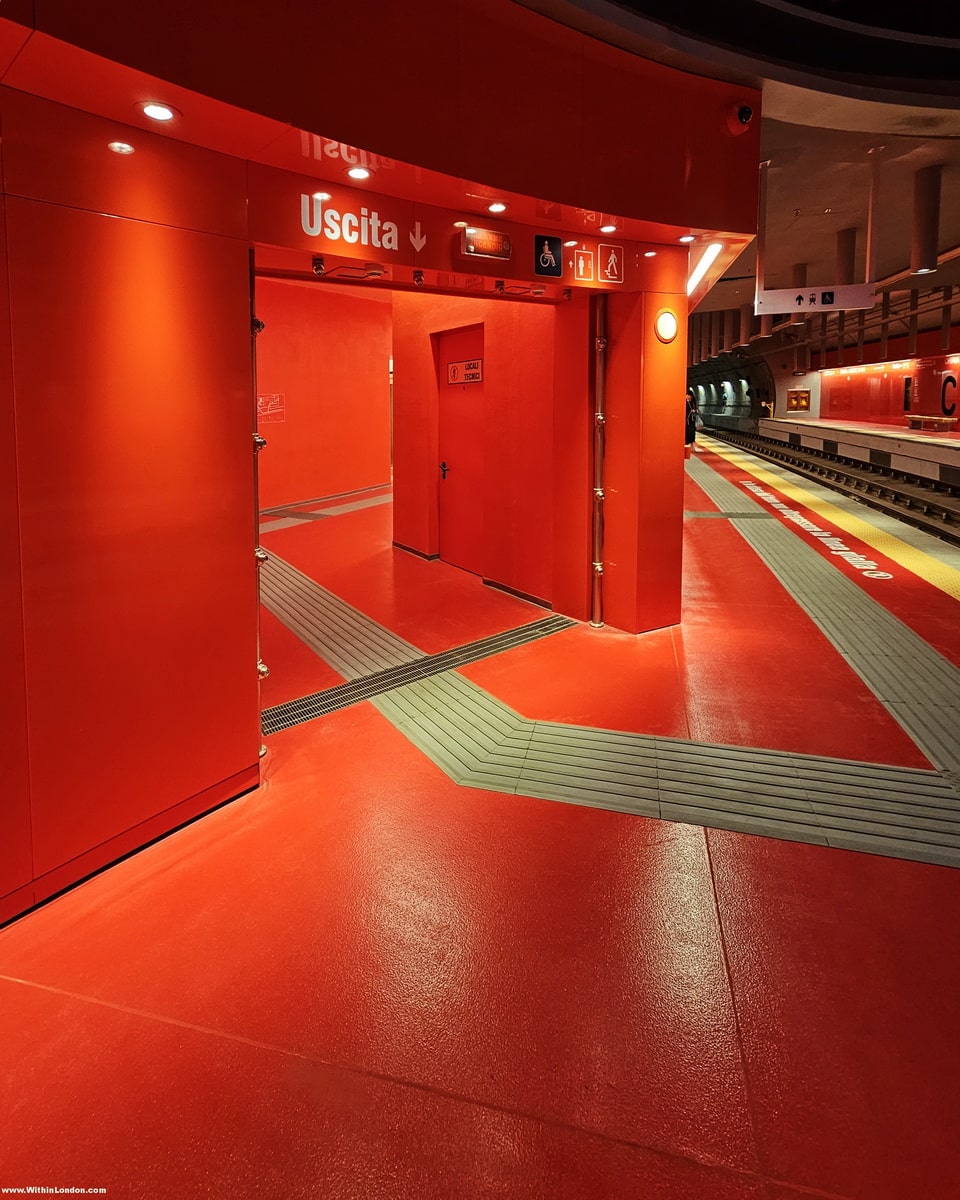London City Envy: What London Can Learn from Naples’ Artistic Metro Stations
- Ina
- Sep 29, 2024
- 4 min read
London, with its iconic skyline, historic landmarks, and vibrant neighborhoods, is undoubtedly one of the world's most beautiful and diverse cities. From the Gothic grandeur of Westminster Abbey to the sleek modernity of the Shard, the city captures a unique blend of old and new.
However, there is one area where London could take some inspiration from a southern European gem: Naples. Specifically, when it comes to turning metro stations into immersive works of art, Naples has set a standard from which London could truly benefit.
The Beauty of London’s Underground
London’s Tube system is a marvel of engineering and history. It’s the oldest underground railway system in the world, and stations like Baker Street or St. Pancras evoke a certain charm and sense of timelessness. Modern stations like Westminster and Canary Wharf are sleek, functional, and futuristic, showcasing London's capacity for cutting-edge design.
But here’s where the city envy comes in: while London’s stations serve their purpose, they rarely inspire awe. The Tube is practical, efficient, and at times overwhelming due to its sheer size. What it lacks, however, is a connection to artistry or local culture within the stations themselves.
Enter Naples: A Subway That’s Also a Masterpiece
Now, if we turn our eyes to Naples, a city famous for its vibrant culture, food, and chaotic charm, we see something truly special when it comes to its metro stations. Naples has transformed its subway into a gallery of contemporary art, with several stops that blur the line between public transit and artistic immersion.

Stations on Line 1 and Line 6 are particularly noteworthy, featuring bold artistic designs that not only beautify the city’s infrastructure but also evoke a deeper connection to culture, nature, and human expression. Two stations stand out on Line 1: Toledo and Università, while Chiaia and San Pasquale on Line 6 are making waves for their design.

Toledo Station: A Journey into the Depths of the Sea
Toledo Station, designed by Spanish architect Oscar Tusquets Blanca, is often hailed as one of the most beautiful subway stations in the world. As soon as you descend, you’re enveloped in a wave of deep blues, mimicking the colors and feeling of the sea. The station’s walls are adorned with intricate mosaics that make you feel as if you are walking into the depths of the ocean.

The meaning of Toledo’s design runs deeper than just aesthetics—it symbolizes Naples’ deep relationship with the sea, which has shaped the city’s history, culture, and economy for centuries. This station is not just a transit hub but a tribute to the city’s maritime soul. Each ride becomes a journey through an underwater world, where commuters are invited to pause and reflect amid the daily rush.
Università Station: A Tribute to Knowledge and Innovation
A few stops down the line is Università Station, designed by Karim Rashid, a hub for students and academics, situated near the university district. Here, the theme of knowledge and innovation comes to life through vibrant, futuristic designs. The walls and floors feature swirling patterns in neon colors, combining technological elements and digital-inspired art with an optimistic view of the future.
Università Station is a playful yet thought-provoking tribute to learning, technology, and the power of education, merging functionality with a design that speaks to the creativity and energy of the academic world. This station, like Toledo, goes beyond its basic function and turns a simple metro ride into an experience.
Chiaia and San Pasquale Stations: Art Meets Transit
On Line 6, Naples continues its artistic transformation with stations like Chiaia and San Pasquale. Chiaia Station is a minimalist triumph, using light and sleek design to create a calm and inviting atmosphere. White walls, soft lighting, and modern art installations make it feel more like a contemporary art gallery than a subway stop.
Meanwhile, San Pasquale has been designed as an ode to abstract expressionism. The use of geometric patterns and vibrant colors evokes the feeling of walking through a painting. Both stations turn mundane commuting into a journey through an art space, creating a thoughtful connection between the city and its public spaces.
What London Could Learn
Imagine if some of London’s busiest stations—like Oxford Circus, King’s Cross, or South Kensington—could borrow from Naples’ innovative designs. Instead of bare platforms and functional tiles, these stations could become showcases of London’s rich history, culture, and artistic expression. Each stop could represent a different era, cultural aspect, or artistic movement that has shaped London, turning the daily commute into an exploration of the city’s soul.

Perhaps a station near the Thames could draw inspiration from the river itself, much like Toledo’s connection to the sea. A station in the academic quarter could feature cutting-edge digital art like Università. The possibilities are endless, and they would give London’s underground system a new level of engagement, making it not just a way to get from point A to point B, but a cultural experience in itself.
Conclusion: A Ride Worth Taking
London is an undisputed global city, but when it comes to metro design, Naples offers a unique lesson: why not make art and beauty a part of the daily commute? Turning metro stations into immersive works of art doesn’t just beautify the city, it enhances the experience of living in it.
Naples has shown how even something as routine as a metro ride can inspire and delight. London, with its rich artistic legacy, could easily follow suit, creating spaces that are not just functional but transformative. After all, a beautiful city deserves an equally beautiful journey.
*All photos were taken by Ina/WithinLondon, unless stated otherwise.



































